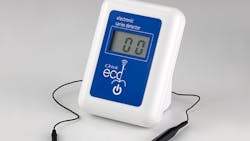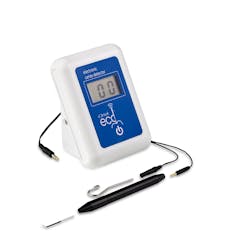New device detects very early cavitated lesions on occlusal surfaces before visible on x-rays
We had the opportunity to speak with Mitchell Goldberg, founder and president of Ortek Therapeutics Inc., about the company's new portable dental device—Ortek ECD. This electronic cavity detection system, developed and tested at Stony Brook University School of Dental Medicine, can detect dental caries before the lesions can be seen on x-rays. The device is FDA-approved for professional use only.
DIQ: Please explain the science behind Ortek ECD.
Goldberg: Unlike other caries detection systems, the Ortek ECD measures the conductivity of enamel. The ECD was specifically designed to help dental professionals diagnose and monitor early cavitated lesions in the pits and fissures located on the occlusal surfaces of posterior teeth. If the dentin-enamel junction is breached by demineralization, hydrostatic pressure that exists within dentinal tubules will allow minuscule amounts of conductive dentinal fluid to enter the breached enamel site, allowing the ECD to complete an electrical circuit.
Loss of mineral from enamel as a result of caries activity increases porous size and enamel porosity. As this demineralization increases, more dentinal fluid enters the breached site. The more fluid detected results in a higher current and an increasing digital caries score that is digitally displayed from 01–100. Intact tooth enamel is a good insulator and is electrically nonconductive. When the enamel at the bottom of a pit or fissure is intact, the circuit path is opened and no current can flow, indicating no cavitated lesion and a zero score.
DIQ: How can dentists use this device in their practices?
Goldberg: Due to its affordability, the ECD can easily be incorporated into dental practices. Suspicious occlusal carious lesions can be a challenge to diagnose and often go untreated. Using the ECD is fast and easy and can be used during routine hygiene exams or by the dentist to help diagnose and monitor these very prevalent lesions. Detecting early cavitated occlusal lesions helps conserve tooth structure. For the practitioner, the ECD will create a new revenue stream with rapid profitability. It's a win-win for dental professionals and their patients.
To learn more about Ortek ECD, visit ecddetect.com.
Editor’s note: Mitchell Goldberg is the founder and president of Ortek Therapeutics Inc. He has more than 30 years of experience as a senior executive in the pharmaceutical, oral care, and medical device industries. Prior to founding Ortek, Goldberg was a cofounder of Noven Pharmaceuticals, a leader in advanced transdermal drug delivery systems.


